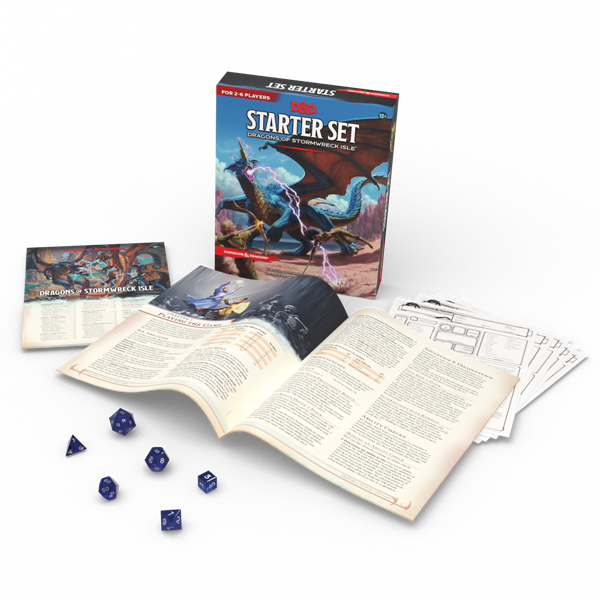
What You Don’t Expect
By The Warden
PREVIOUSLY: It’s starting to get crowded in this flashback paragraph, but let’s stick to the immediate updates. First of all, you can check out all the previous Phoenix Project posts using the tag. Last week, I defined the exact terminology for two of most pressing and challenging elements in the game: Minor and Major Complications. With a clear view of how I want things to work and how they will be phrased, it’s time to move onto the next challenge – not screwing it up.
Here’s the real curse about game design, much as it is with any form of creative writing: everything makes perfect sense in your head. The trick is connecting all the dots and allowing everyone outside of your head (so, you know, everyone) the chance to comprehend and implement your work. Depending on your level of experience in either field, you may know what hurdles you face in this cranial interpretation and mine involve assumptions. As much as I’d like to think we all face the same hurdle, I don’t know what goes on in your head more than I can barely understand what’s going on in mine most of the time, but it’s safe to assume it’s not my sole cross to bear.
It’s very easy to assume you’ve covered all the bases of your design when it’s just you, the author. For example, when I drop down the term “d6,” I instantly know what I’m talking about. This example is not the best one for the long form of my point, but it’s a handy shorthand. I can also count on experienced gamers knowing what I’m talking about as well and if I’m not targeting the inexperienced market, I can likely leave it aside and never bother my editor(s) with any notes to clarify otherwise. A bigger example is the assumption that the reader knows how to play a roleplaying game in the first place. These two examples can be viewed as hand-in-hand because it’s safe to say anyone who knows that “d6” means a 6-sided die, they understand the basics of how to play your average RPG.
This is just the beginning of the slippery slope of design assumptions. An independent game designer/publisher can assume their customers have already purchased and played previous RPGs, but they certainly have not played yours (unless yours is an offshoot of an existing system and that assumes your chosen ruleset is a popular one). That’s where I tend to struggle and it’s why I tend to get wordy with my game designs. For the Phoenix Project, wordy will not cut the mustard.
After drafting up a first draft of the rules last night, it’s only required 1966 words to explain the core mechanics of play and that’s a great start. It doesn’t, however, include two of the most equally fundamental considerations for game design: character creation and GM guidance. Because of the loose tone of Phoenix’s mechanics – particularly because there are no preset Potentials (AKA attributes) provided for this system – I’m very confident I’ll only need 300-500 words for character creation, which means I’m at the halfway point of my total word count of 5000 words.
When I first saw this percentage, my immediate reaction was a feeling of success beyond my wildest dreams for this project. I started to think about other possible additions I could include in the mechanics… until I remembered some of the problems that arose during my last couple of projects. I assumed rules explained how the Gamemaster can control the flow of gameplay and interpret the meaning behind the rules. These were things that all made sense in my head as I was writing them, but I was writing for the players at that point in the design process. Writing for Gamemasters is another hurdle altogether.
THE FORGOTTEN ESSENTIAL
Game design has one group squarely in mind during its initial design phases: the players. When you talk about stress testing, game balance, and so many other components of any design, it’s with the players in mind. They’re the ones who are initially expected to make or break a game and there’s nothing wrong with that assumption. At the table, they’re the ones I expected to uncover the one flaw in my plot or seize advantage of a particular loophole and it’s a matter of deciphering whether those flaws are unacceptable or require a simple limitation on how many times you can take whatever they broke. During the initial phases of playtesting, players are the one variable as it’s almost always the designer who runs those early games.
But the GM is your one true hope for the game to succeed outside of your hands and it’s so easy to forget that. Ironic, isn’t it? Seeing as every game designer started scratching their creative itch as a GM before those house rules and homebrew settings started to build an idea in your head to take everything to the next level, you’d think we’d be our own top priority. Then again, since the GM’s job is to provide for the players, it starts to make a lot of sense. As much as I like to think I always design with the GM in mind, it’s only mechanically speaking. One of the hopes I have with Phoenix Project is to provide all GMs with a creative game where they feel they are doing more than simply reading aloud text and ensure all the written text goes ahead as planned. (It’s an internal belief, one that I’ve mentioned before that others do not agree with, but let’s skip over that for now.) That’s for the mechanics to handle; what I’m talking about right now is providing the necessary understanding of the mechanics so you don’t need to establish a toll-free hotline to answer questions 24/7.
That’s where experience expectations come into play. Understanding a basic level of experience your average target GM may have sets the tone for exactly how much you can cheat on your text. The larger and/or ambitious young publishers provide the oh-so repetitious “What Is A Roleplaying Game?” section in the Introduction – is this something I need to consider for Phoenix Project? Assuming not, there will be some matters I’ll need to teach, such as how to best use Complications, seeing as a very freeform style of action/reaction with a few tight set rules to keep it in line. Simultaneously, it would be ignorant to expect everyone will run this system exactly the same as me, just as it would be foolish to assume the outcome of my regular players will turn out the same at the majority of tables.
THAT’S RIGHT… IT’S A PITCH-FOR-PLAYTESTING POST!
Yep, playtesting to the rescue. Aside from the usual suspects as to why extensive playtesting is a requirement in game design, there’s the plain and simple fact that your game only makes sense to you so long as you’re the one teaching it. If it’s at your table or written in your words, you may be able to count on everything going smoothly. But every game will not be run at your table and not every player is going to learn the game by reading your words. You’ve just unofficially designated the GM at every table as your unsupervised spokesperson who will translate your work to suit their linguistics, style, and mood. At least, that’s what you need to assume. You know, just to play it safe.
There’s a lot of great advice for playtesting games-in-progress across many a fine blog, but there are three general rules of playtesting advice I need to consider moving forward. For the here and now, I’ll have to work with what I have and move forward once I unveil the basic concept for the Phoenix Project (in two weeks time – stay tuned, you won’t want to miss it!) but my plan for playtesting involves four methods.
Playreading: It’s actually “reading” rephrased as a play on words. Get as many people to read the rules as possible and gauge their reactions plus document their feedback and make the necessary adjustments. This step will ensure how the rules are phrased remains clear and available to meet the needs and demands of its potential audience – Gamemasters. At this point, you’re targeting players. Not yet. Playreading allows others who are interested and generous enough with their time to take a gander, download a Word file, and read through on their lunch break before posting some feedback just on that read-through alone. While it can sometimes be helpful to read comments such as “I don’t think X rule will work during a game…” or other theories outside of play, it never hurts to get an idea of where you may have difficulty selling your game once its ready to go to market.
Bulk Character Creation: This is a new idea for me and one I’ve yet to implement in any game designed yet, but I really think it’s something I should have tried years ago. For this second step, I plan on getting people – potential GMs or players – to create characters using the current draft. Let ’em go wild and see what they come up with. This will tell you exactly what attracts your average player and if there’s any possibility of an abused rule or unexpected crack in your foundations, especially when it comes to setting your default target number. For example, I might assume the average Difficulty will be a 5 simply because the math tells me 5 is a good middle ground for your average character and the way in which you imagined the average character was with a d8 for your average stat. After looking over the characters everyone’s created, I discover they like to load up a single stat with a d12 and will almost always find a way to use that stat; this may require some reconfiguration to either the average Difficulty in my game or I may want to tone down character creation a little.
Playtesting: Just like your momma always taught you. Grab your friends, go to a con, start a Hangout and start running your game. You are the GM and you want to see if everyone else enjoys it enough to consider playing it again. Nice and simple. This will tell you if all your previous work is paying off or whether you need to go back and fix a few issues before playtesting again.
Casual Observer: This final phase is just like playtesting, except you’re that awkward fly on the wall watching another group – complete with another GM – playing your game. Right now, you want to see how they handle the game with as little input from you as possible (unless it helps fix a slightly derailed game because nothing crashes into your ego faster than a game ending due to derailment). Otherwise, sit back and take notes or simply watch the fun with a big grin on your face. If everything works without your help, you know it’s all been worth it.
Because let’s be honest, there will always be assumptions in any design prior to playtesting. That’s what playtesting fixes. Not the game, but the assumptions. Until then, I’m one step closer to the unveiling.

